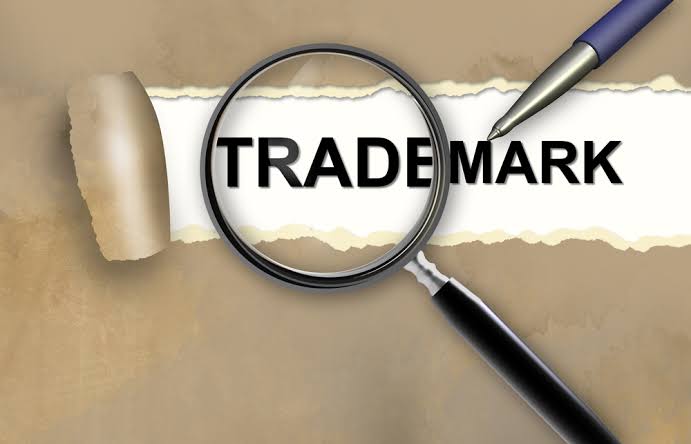Trademarking your business’s name, logo, or slogan is one of the best ways to protect your intellectual property and establish your brand’s identity. However, the trademark process can be complex, and many business owners make mistakes that can delay or even derail their registration. Understanding these common trademark mistakes and how to avoid them is essential for ensuring your mark is legally protected and your brand remains strong.
In this post, we’ll walk through some of the most frequent trademark mistakes and offer practical tips on how to steer clear of them.
1. Choosing a Weak Trademark
One of the most common mistakes is selecting a weak trademark—something that is too generic, descriptive, or commonly used in your industry. A weak mark is difficult to protect because it doesn’t distinguish your business from others. Trademarks need to be distinctive in order to be registered and defended effectively.
Mistake: Using common words or terms related to your products or services, such as “Fresh Pizza” for a pizza restaurant or “Best Construction” for a construction company.
How to Avoid It: Choose a strong, unique trademark that sets you apart. Trademarks can be classified into four categories based on their distinctiveness:
- Fanciful Marks (e.g., “Kodak” for cameras) – The strongest type of trademark, as they are entirely made-up words.
- Arbitrary Marks (e.g., “Apple” for computers) – Words with no logical connection to the product or service.
- Suggestive Marks (e.g., “Netflix”) – Words that suggest a characteristic of the product but require imagination.
- Descriptive Marks (e.g., “Best Pizza” for a pizzeria) – These are not inherently protectable unless they acquire distinctiveness over time. Avoid choosing descriptive terms or names that simply describe your goods or services.
2. Not Conducting a Thorough Trademark Search
Skipping the trademark search before filing is a risky mistake that many business owners make. A trademark search helps ensure that your proposed mark is available and does not conflict with existing trademarks. Without it, you might end up spending time and money applying for a trademark that’s likely to be rejected or, worse, already in use by someone else.
Mistake: Filing a trademark application without performing a search for similar existing trademarks.
How to Avoid It: Before applying for a trademark, always conduct a comprehensive trademark search. Use the U.S. Patent and Trademark Office (USPTO) database (or the relevant trademark office in your country) to check for identical or similar marks that could cause confusion. While it’s possible to conduct a search on your own, hiring a trademark attorney is advisable to ensure a thorough search is done, as they can identify potential conflicts you might miss.
3. Failing to Define the Proper Trademark Class
Trademarks are classified by the types of goods or services they represent. If you fail to select the right trademark class (or multiple classes), it could impact the scope of protection your trademark provides. Each class covers a different category of goods or services, and your trademark will only be protected within the classes you select.
Mistake: Choosing the wrong class or failing to select the appropriate classes altogether.
How to Avoid It: Research the correct trademark class(es) that match the goods or services your business offers. If you offer multiple products or services, you may need to file for more than one class. For example, if you sell clothing and also provide online services, you may need to register in both the clothing and online services classes. Your trademark attorney can help you determine the correct classification for your business.
4. Neglecting to Monitor and Enforce Your Trademark
Once your trademark is registered, it’s essential to actively monitor and enforce your trademark rights. Failing to do so could lead to unauthorized use of your mark, which may dilute its distinctiveness and brand value. Trademark owners are required to defend their rights or risk losing them.
Mistake: Not monitoring the marketplace for potential trademark infringement or failing to take action against infringing uses.
How to Avoid It: Regularly monitor the market and online platforms for potential infringing uses of your trademark. Set up alerts on trademark databases to track new applications that may conflict with yours. If you find someone infringing on your mark, take action immediately by sending a cease-and-desist letter or consulting a trademark attorney to discuss your options. Timely enforcement helps protect your mark’s value.
5. Not Renewing Your Trademark
Trademarks are not indefinite; they require maintenance and renewal at specific intervals. In the United States, for example, you must file certain documents and fees between the 5th and 6th year after registration and again every 10 years to keep your trademark active.
Mistake: Forgetting to file the necessary documents or pay the renewal fees, leading to the expiration of your trademark.
How to Avoid It: Set reminders for yourself and keep track of when your trademark needs to be renewed. Hire a trademark attorney or a service provider that can help you manage your renewals and ensure your rights remain intact.
6. Using Your Trademark Incorrectly
Many businesses unknowingly misuse their trademark by failing to maintain its distinctive nature. For instance, using your trademark in a generic or pluralized form can weaken your protection. Over time, a trademark used incorrectly can lose its strength or even become a generic term (e.g., “Xerox” for photocopying).
Mistake: Using the trademark in ways that dilute its distinctiveness or allow it to become generic.
How to Avoid It: Always use your trademark correctly. Avoid making it a plural or possessive (e.g., “Coca-Colas” instead of “Coca-Cola”). When referring to your trademark in writing or advertisements, ensure it’s clear that it’s a protected brand, not a generic term. Include the ® symbol (for registered marks) to signal that the trademark is protected. If you notice others using your mark incorrectly, be proactive in educating them on proper use.
7. Assuming Trademark Registration Is Automatic
Some business owners think that simply using a trademark automatically grants them rights, but that’s not the case. In many countries, including the U.S., trademark rights are granted through registration. While common law rights exist through use, these rights are limited in scope and geographic protection.
Mistake: Assuming trademark rights are automatically granted just by using the mark in commerce.
How to Avoid It: Always file for trademark registration if you want to protect your mark comprehensively. Trademark registration provides legal benefits, including nationwide protection and the ability to take legal action if someone infringes on your mark.
Conclusion
Trademarking your business is a smart and essential step toward protecting your brand, but it’s important to approach the process carefully. By avoiding these common trademark mistakes, you can ensure that your mark is properly protected and that your business remains safe from potential legal issues. If you’re unsure about any aspect of the trademark process, consulting with a trademark attorney can help you navigate these challenges and set your brand up for long-term success. We recommend trademark attorney orlando.




